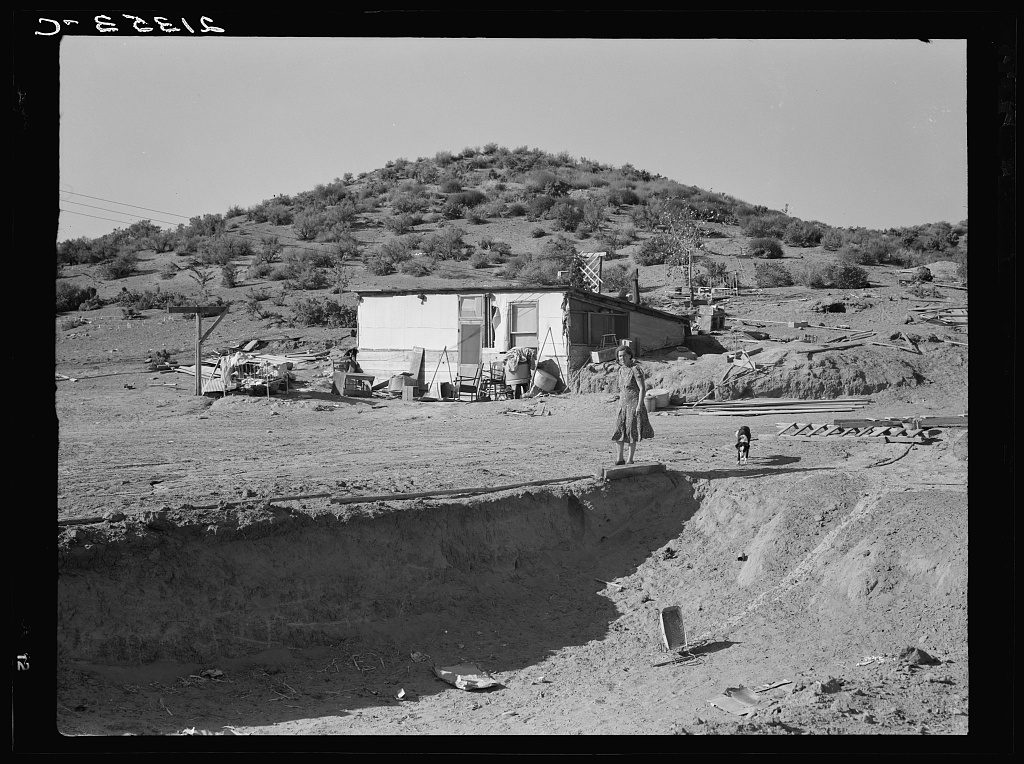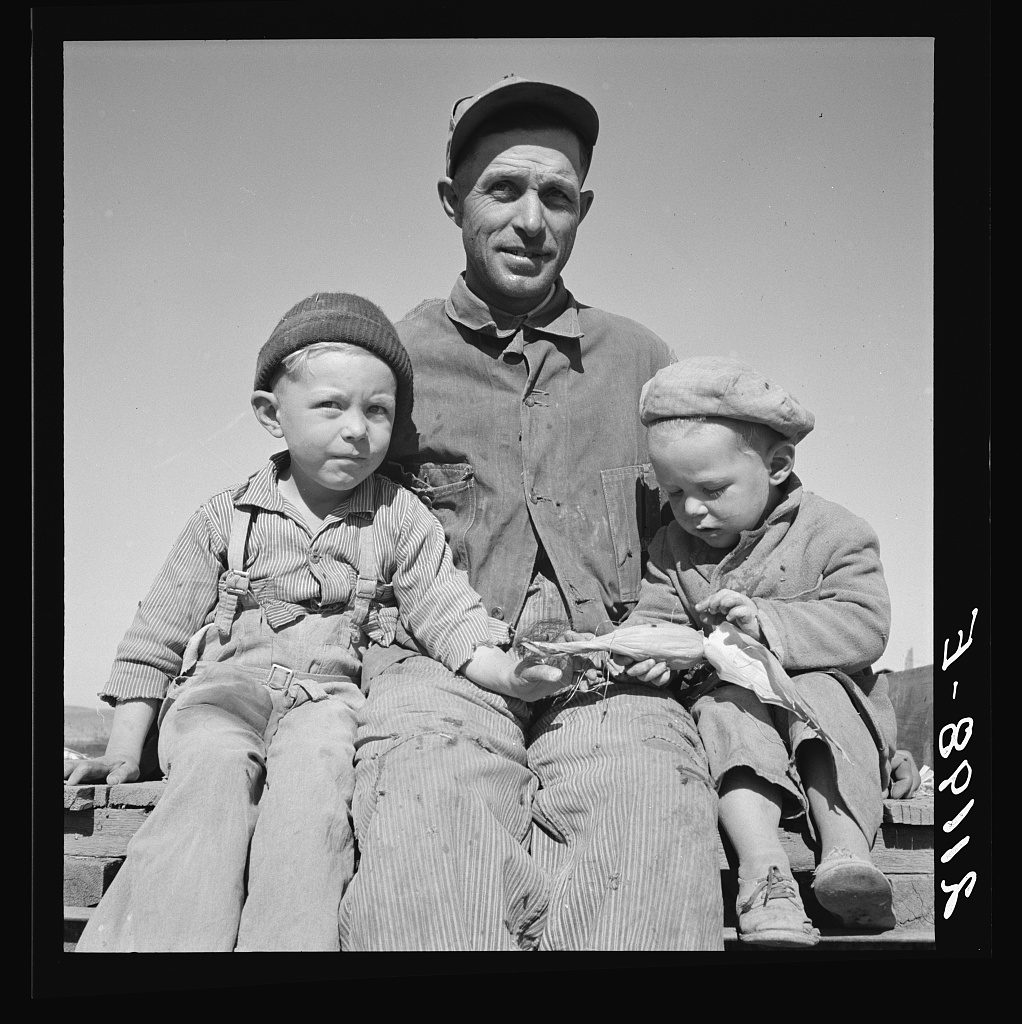
“New farm in Cow Hollow, Malheur County, Oregon. Note basement dugout house and excavation for new house in foreground.” Dorothea Lange, 1939, courtesy Library of Congress
Some day I’m going to find an excuse to write – I mean really write – about Dorothea Lange.
One of my favorite Internet rabbit holes is the Library of Congress photo archives, and one of my favorite sub-rabbit holes there is the work of Dorothea Lange.
For much of the 1930s Lange, working for the Resettlement Administration and then the Farm Service Administration, photographed rural American poverty. Much of our common public understanding of the depression and its impacts on rural America (they also shot urban poverty, but their most powerful work was of rural communities) comes from the iconic imagery of Lange and her FSA colleagues. Lange’s “Migrant Mother” is one of the great works of the American canon.
There’s something deeply uncomfortable about the work for a couple of reasons. The first is the raw intimacy with which Lange shows poverty. Some of them make me wince. You’ll notice my choice of picture for this post – not one of Lange’s burning close-ups.
The second is the way in which our government funded the creation of the imagery, which it made freely available, as part of an effort to build public support for policies that were in some ways controversial. Lange and her FSA colleagues were not traveling randomly. They were visiting places served by FSA and other federal programs. The picture above if from a Lange trip documenting the US Bureau of Reclamation’s Owyhee Project, delivering Snake River water to farms in eastern Oregon. There is a huge body of FSA work documenting the benefits of federal irrigation as the Resettlement Administration and subsequent federal programs attempting to develop new agricultural communities for those driven out of the Midwest by the Dust Bowl. Side by side with their more famous and powerful work are many FSA pictures of irrigation works. Dorothea Lange was at her best photographing people. Her plumbing work – meh. I am uncomfortable with the implication that this amazing body of American art was funded by and used as tool of government propaganda.
Both of those reasons for discomfort interest me enormously. Because the pictures are amazing, a remarkable body of work capturing a remarkable moment in time.

“Franklin Schroeder, from South Dakota, and his two older boys. Dead Ox Flat, Malheur County, Oregon.” – Dorothea Lange, 1939, Courtesy Library of Congress

I could show you photos of my dad during those times that have an amazing similarity to the ones posted above. Everyone was dirt poor but perhaps he was one of the lucky few working in the oil fields in and around Cushing OK., he was able to make enough money to feed a wife and five kids.
A short reply to a large story.